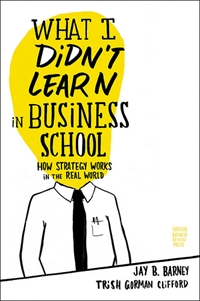Guardrails: Keep Your Projects Out of the Weeds

Business is a fast and zigzagging road – a road that needs guardrails to keep businesses and projects on track. On your road to success (whether it be to increase profits, become an industry leader, capture more market share, etc.), you need to establish your own guardrails so you do not drive your company or project into the weeds.
Establish Guardrails
I worked in several large companies during my corporate career, and I can’t tell you the number of pet projects that became my pet peeves. I saw literally millions and millions of dollars flow into projects that had no real metrics and timeline in place. In other words, these projects had no guardrails.
You can ensure that your projects don’t waste time or money by simply putting the correct boundaries in place. You must think, “this is what we’re trying to drive to and if we don’t get to it at this point, we’re going to go back to the drawing board to go after the next idea.”
Proper Boundaries
To establish proper boundaries, you must do the following:
- Identify the major steps (or zig zags) that will take you to your goal. Example: Zig #1: Drive to profitability – have product bring in $20K in revenue.
- Define when you have completed your zig zag. Example: We will have sold 15K units of product.
- Set a deadline to assess your team’s progress. Example:We will have sold 15K units of product and bring in $20K in revenue by April 2012, or we will go back to the drawing board.
Zigzagging to Success
Establishing guardrails is just one element of the entire Zig Zag Principle. I encourage you to be strategic and deliberate about the way you approach your business. It may seem counterintuitive, but zigzagging to your goal (rather than charging straight for it), with the correct guardrails in place, will lead you and your business to success.
About the Author

Rich has founded or co-founded 32 businesses. These ventures were bootstrapped with just $5,000 to $10,000 of starting capital. Eleven of those businesses were miserable failures, but eleven have became wildly successful multi-million dollar businesses. Rich has identified The Zig Zag Principle as his secret formula for optimizing success while minimizing failure. It is also his methodology for setting goals and living a happy, healthy life. To read Rich Christiansen’s full biography, click here.


 Rita McGrath, a Professor at Columbia Business School in New York, is one of the world’s leading experts on strategy in highly uncertain and volatile environments. She works with both Global 1,000 icons and smaller, but fast-growing organizations. Some current clients include F-Secure, Nokia, Microsoft, (and its CEO Summit), AXA Equitable, General Electric, Novartis, PPG Industries, the Stena Group and the World Economic Forum. She is a popular speaker and consults to senior leadership teams. In 2009, she was inducted as a Fellow of the Strategic Management Society, an honor accorded to those who have had a significant impact on the field. To read Rita’s complete biography,
Rita McGrath, a Professor at Columbia Business School in New York, is one of the world’s leading experts on strategy in highly uncertain and volatile environments. She works with both Global 1,000 icons and smaller, but fast-growing organizations. Some current clients include F-Secure, Nokia, Microsoft, (and its CEO Summit), AXA Equitable, General Electric, Novartis, PPG Industries, the Stena Group and the World Economic Forum. She is a popular speaker and consults to senior leadership teams. In 2009, she was inducted as a Fellow of the Strategic Management Society, an honor accorded to those who have had a significant impact on the field. To read Rita’s complete biography,